



 SOME OF LARSON’S TECH UTILIZED WITH A PATIENT IN THE NEW RIVER PRAIRIE OFFICE
DRS. MATT LARSON & KATIE MIETTUNEN LARSON
SOME OF LARSON’S TECH UTILIZED WITH A PATIENT IN THE NEW RIVER PRAIRIE OFFICE
DRS. MATT LARSON & KATIE MIETTUNEN LARSON





 SOME OF LARSON’S TECH UTILIZED WITH A PATIENT IN THE NEW RIVER PRAIRIE OFFICE
DRS. MATT LARSON & KATIE MIETTUNEN LARSON
SOME OF LARSON’S TECH UTILIZED WITH A PATIENT IN THE NEW RIVER PRAIRIE OFFICE
DRS. MATT LARSON & KATIE MIETTUNEN LARSON
Dr. Curt Travis says he lived in Eau Claire for years before he realized Bullis Pond existed. Once central to the 420-acre Bullis Farm – which covered much of what is now the Oakwood Mall area on Eau Claire’s south side – the scenic natural pond is now mostly tucked out of view behind commercial buildings.
When Dr. Travis and his partner, Dr. George Metropulos, opened a new dental practice in 2018, they decided to make the pond part of the attraction: Most of the dental chairs in the office face outward toward the idyllic setting.
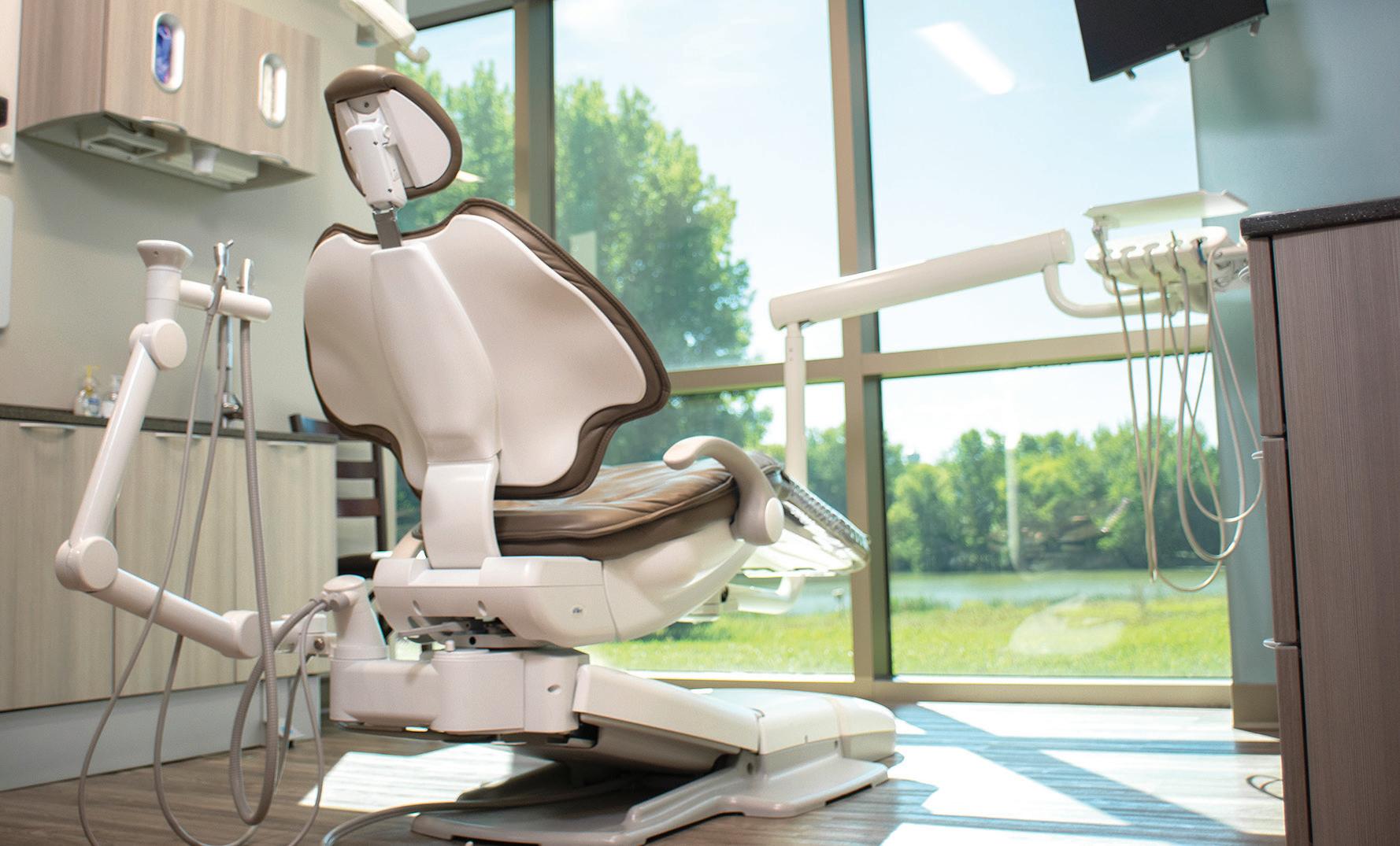

“We’ve got an outstanding view, for our patients’ sake, for our sake,” Dr. Travis explained. “It’s just cool to be able to gaze out there.”
This attention to patients’ com fort and peace of mind is key to how Bullis Pond Dental operates. Since opening their doors almost four years ago, Drs. Travis and Metro pulos have worked to put patients of all ages at ease, whether they’re longtime friends or just walked in the door for the first time.
“It all is about relationships,” says Dr. Travis, who has been prac ticing in the Chippewa Valley since
1985. “It’s not about this procedure, that procedure, this approach, that approach. It’s all about having peo ple’s trust and confidence.”
When it comes to patients, Dr. Metropulos says, “We’re here for them. The only reason we’re able to sustain a business is because of the people that we care for.”
The two dentists, who had prac ticed at other offices in the area over the years, joined forces to build a new business from scratch. They located at 3504 Oakwood Mall Drive and soon began attracting patients, some of whom they served previous ly.
Dr. Metropulos, who has been practicing dentist in the Eau Claire and La Crosse areas since 2008, says he appreciates the partnership with Dr. Travis, which allows the two to bounce ideas off each other, partic ularly about the details of cosmetic dentistry. The practice focuses on preventative and restorative care, as well as smile design. The latter is a particular interest of Dr. Metropulos, who enjoys helping patients become more confident about their smiles through treatment and improved technology.
“Now we’re finding materials that are so strong that we can pre
serve the tooth structure and still get a really good outcome aesthetically,” Dr. Metropulos said.
Putting people at ease is key to the Bullis Pond approach, and there’s no magic formula for that, Dr. Travis says. “If you can build some trust and confidence in a patient before you even have to do anything for them, the outcomes are so much better for the patient,” he says.
This is especially important for those who are reluctant to visit a dentist or haven’t had a checkup in a
long time.
“We never are going to judge a person that it’s been X-amount of years,” Dr. Travis adds. “Once they sense they’re not going to be lectured, then their comfort level comes up right there.”
Ultimately, patient com fort and connect are key to the business. Dr. Metropulos points to an important adage: “They don’t care what you know until they know that you care.”
good oral health, saying “aah” in the dentist’s chair is certainly helpful. Dental professionals like Dr. Stephen Welna of Eau Claire’s Hillside Dental can learn a lot from peeking in their patients’ mouths. But they can’t learn everything, and that’s where X-rays come in.

For more than a century, den tists have been using X-rays in their practices, and these days at Hillside Dental the process is entirely digital. This produces images more quickly and easily and with less radiation than old-fashioned film X-rays, Dr. Welna said.
There are three primary kinds of dental X-rays: bitewings, which are normally taken in sets of four and show the back teeth; PA (or periapi cal) X-rays, which show specific areas of concern, such as a single tooth and its root; and panoramic X-rays, which encompass the whole mouth (see image below of Dr. Welna’s own X-ray). Bitewings are usually taken every year or two, while PA X-rays are taken as needed and panoramic X-rays are taken every five years or so, Dr. Welna said.
X-rays can be used to find out-ofsight cavities, but they’re also useful for much more.

“We always get a lot of questions about radiographs – ‘Are they really
necessary? Do we really need to do those?’ – a lot of those kind of ques tions,” Dr. Welna said. “The quick answer is basically yes: Part of a den tal exam is a periodic X-ray examina tion. We’re looking at the bone, look ing at the teeth to make sure there’s no cavities. We’re keeping an eye out for lots of other odd and obscure things that can happen. We’re making sure there’s nothing that looks like it could be potentially cancer. Those kinds of things are at the top of our mind when we’re looking at X-rays.”
Dr. Welna said X-rays can be used to detect bone loss, to identi fy hard tartar deposits below the gumline, and even in the midst of procedures to make sure they are going as planned.
Yet concerns identified on dental X-rays may not even have anything to do with teeth. Dr. Welna periodically refers patients to their primary-care physicians because he suspects they have blockages in their carotid arter ies, which run through the face and neck. And sometimes what a patients thinks is a toothache is actually a problem with their sinuses.
Despite their many benefits, patients can be reluctant to undergo X-rays because they’re worried about the radiation exposure. While he understands such concerns, Dr. Welna said, “At the end of the day, the amount of radiation that we use for dental
radiographs is extremely small.”
How small? According to the American Dental Association, the amount of radiation you’re exposed to when you get four bite wing X-rays is about 0.02 millisieverts. In layper son’s terms, that’s less than 1/150ths of the average background radiation exposure an American encounters an nually. It’s about one-fifth the amount of radiation in a chest X-ray, 21 times less than the amount in a mammo gram, and roughly the equivalent of eating 200 bananas. (Yes, a minuscule amount of the potassium that occurs naturally in bananas is radioactive.)
In other words, it’s only a tiny amount of radiation in exchange for a diagnostic tool that can improve your health — dental and otherwise.
“I always tell patients, half of me
putting the pieces of the puzzle togeth er is me looking at the teeth and the other half is the X-ray,” he said. “If you take away half of my tools to do my job, that makes it very challenging to really do things effectively for them.”
Ultimately, one of the best ways to reduce how often you need dental X-rays – and many other dental pro cedures – is pretty low-tech: brushing and flossing regularly. Patients who take good care of their teeth will need X-rays less often, while those who practice poor oral hygiene might need them more frequently.
“We always tailor what we’re doing with X-rays to the patient,” Dr. Welna said.
Kristo Orthodontics has grown by leaps and bounds since 1988 when Dr. Steve Kristo joined the practice his father, Dr. Andrew Kristo, had founded nearly 30 years earlier. Starting from one clinic in Eau Claire, Kristo Orthodontics now operates statewide, with 15 locations in the Chippewa Valley and across Wisconsin.
“I am committed to providing orthodontic care that’s personalized to meet our patients’ unique needs and life goals,” Dr. Kristo said. “Seeing the joy and smiles on my patients’ faces shows just how life-transforming an improved smile is.”
As the business has grown in recent years and more experts have joined the Kristo team, there is a unique combination of longtime experience with high ly-qualified and caring team members.
What makes Kris to unique? They offer no-obligation, one-onone consultations with doctors and an expert team, and flexible pay ment options with $0 down and 0% interest financing.
Braces or Invisalign® clear align er treatment options are available for children, teens, or adults to give you confidence in what makes you amazing – your smile.
“I don’t think there’s a better value play for someone who wants to improve their overall health, their aesthetics, their smile, and overall con fidence and quality of life,” Dr. Kristo said. “I’m dedicated to providing the highest-quality orthodontic care that creates healthy, amazing smiles that function well and build self-esteem.”
Today, more than 40% of Kristo’s patients use Invisalign, including about 90% of adults. Kristo has been treating patients using Invisalign for more than 20 years, and the product’s technology has continued to improve. Kristo says he can do just about anything with Invisalign that he can with traditional wire-and-bracket braces.
And even for those who choose
braces, technology has evolved. Gone are the days of unsightly, uncomfortable headgear, and orthodontists are now less likely to remove teeth than to try to create space by expanding pa tients’ jaws, Kristo says.
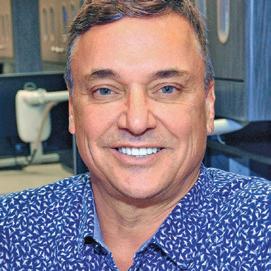
Kristo Orthodontics care for kids surpasses their teeth, that’s why Kristo is imple menting a new and exciting program for kids ages six and up, called the Confi dence Counts Club. This club will have fun and free events across the Chippe wa Valley for both kids and other community members.
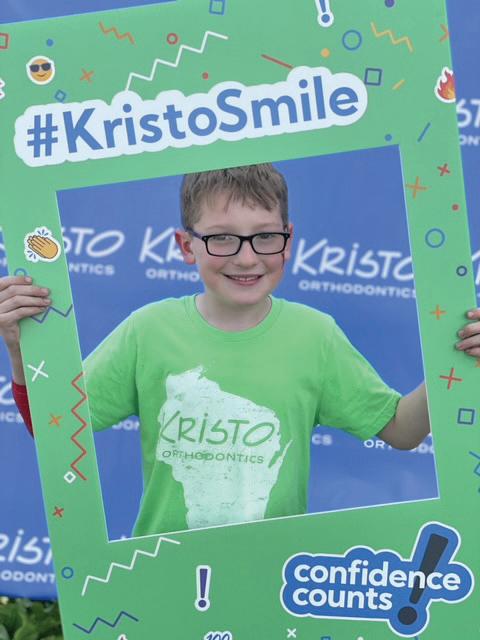
“This Confidence Counts Club helps to share our unique and exciting culture in our surrounding communi ties while highlighting the importance of annual orthodontic exams for kids starting as young as six,” said Dr. Kristo.
Dr. Steve Kristo has worked alongside for years with Dr. Bob Bronski, and both doctors are passionate about helping kids all over the Chippewa Valley, which is why they
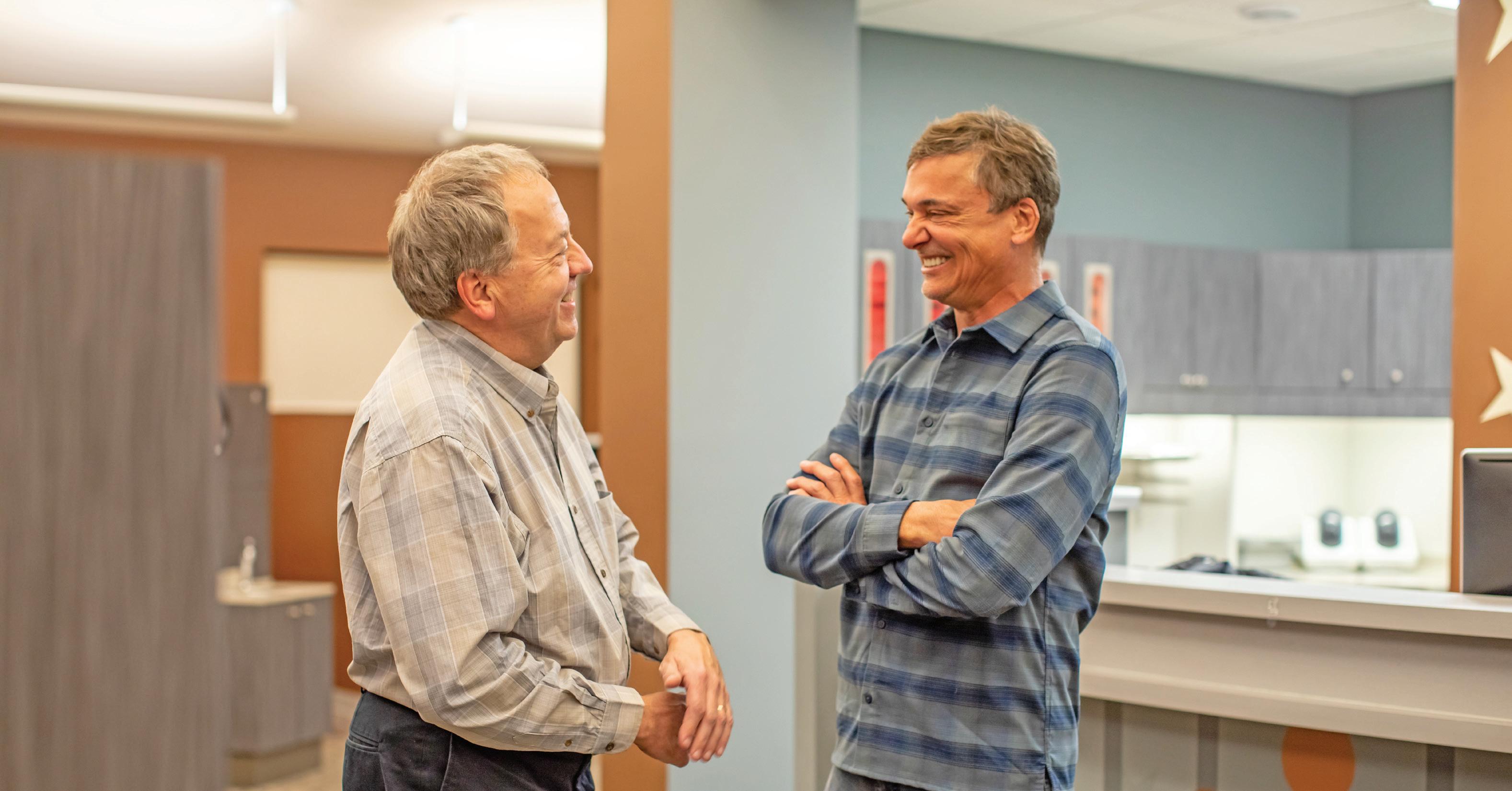
port hundreds of local area schools, organi zations, and groups.
“My children and I are deeply rooted in the area and enjoy being active in our communities,” Dr. Kristo said. “We love the many theaters and arts the Chippewa Valley has to offer, and as an avid sports fan, I’m always excited to support youth sports groups in the area.”
Dr. Amanda Spitz has always been drawn to children – and it was this affinity that set her on a career path caring for kids’ teeth. “I love interacting with them and seeing them happy,” she says. “During my four years in dental school my happiest days were when I was working with children, so I ul timately decided to continue my training in pedi atric dentistry.”
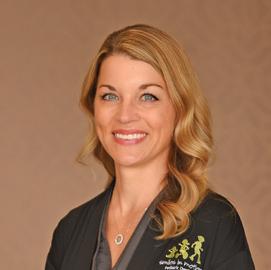
Spitz found ed Smiles in Motion in 2008, opening the doors of its first clinic the following year in Chippewa Falls. “I wanted to change percep tions of what it means to go to the dentist – I wanted to offer excep tional experienc es for children and their families,” she says. In the years since, Smiles in Motion has add ed offices in Eau Claire, Menomonie, Rice Lake, Amery, and Hudson.
As any parent knows, children aren’t just little adults, and this goes for their dental needs, too. Pediatric dentists like those at Smiles in Motion receive an extra two years of training focused on treating children from birth through adolescence. They are not only educated in how to treat the unique needs of children’s teeth and
oral structures, but also receive spe cial training in child psychology, child development, and caring for children with special needs.
Building a compassionate team is key, Spitz explains. “What we focus on training our team to do is to have em pathy with every situation,” she says. Like adults, children may be scared or nervous when visiting the dentist. At Smiles
In Motion, the pediatric dentists and their teams are amazing and skilled at calming and distracting kids. The dental instruments and procedures are given child-friend ly names and chil dren can choose to chat about

the sugar bugs being chased away or put on headphones and watch movies instead. All of this helps children not only gain better dental health but also confidence in a dental setting, Spitz says.
The Smiles in Motion team also works to put adults at ease. “If a parent finds out their child has treatment needs, it can elicit various emotions, so
all treatment options are discussed,” she says. Parents may have had negative experiences with dentists during their own childhoods, and they appreciate bringing their kids to a place where smiles are the focus.
Smiles in Motion strives to create a fun, comfortable environment. Their Eau Claire office, for example, fea tures a lobby outfitted with a real-life slide and other interactive play equip ment, as well as colorful exam rooms.
While it looks like all fun and games, the Smiles in Motion team
training that go far beyond general dental care. They not only learn how to diagnose and treat children, but they also receive special training in child psychology, child development, caring for children with special needs, and much more.
Smiles in Motion’s team of pedi atric dentists provide a full spectrum of dental services. If your child’s smile needs it, chances are they can do it –and do it well.
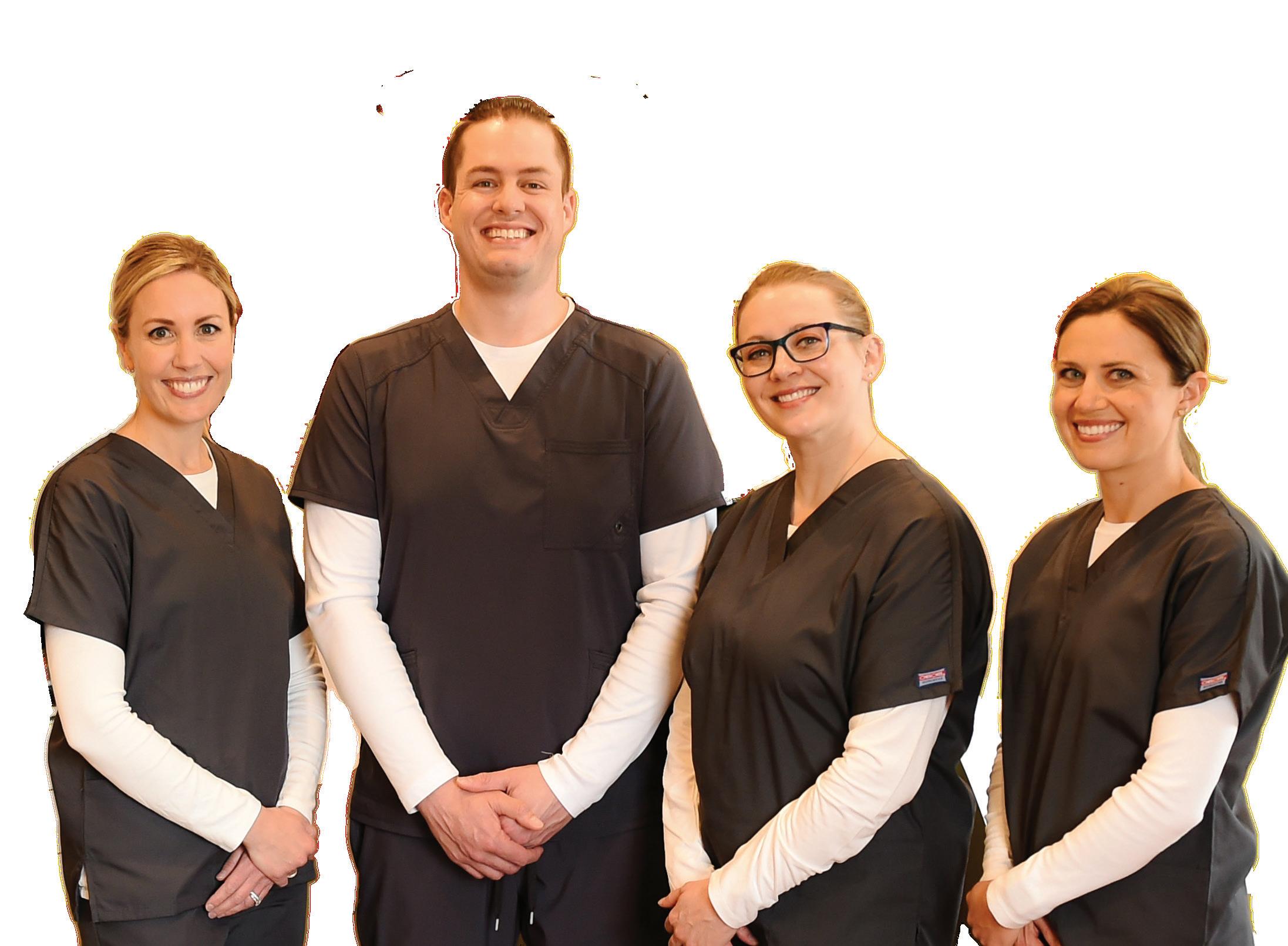
“We care deeply about the com munities and families we serve, and

According to the National Library of Medicine, dental fear and anxiety (DFA) affects about 36% of the population, with an additional 12% of people with extreme dental fear. This fear leads to an avoidance of the dentist and can result in poor oral health.
The dentists at Shook Family Dental, husband and wife team Dr. John and Dr. Monica Shook along with Dr. John’s father, Dr. Randy Shook, see how this anxiety can affect people and their oral health all the time, which is why they are passionate about creating a safe and calming environment for everyone that comes through their doors.
Every new patient at Shook Fami ly Dental gets a consultation with the hygienist or doctor they will be treat ed by, which includes an assessment of any DFA and how they can help
“We understand that hyping yourself up to even sit in the chair is a really big deal for some people,” Dr. Monica said. “That’s totally valid. You have that need and we’re here to help you with it.”
For people that have come in with DFA, Shook Dental has head sets to block out any frightening noises, TVs on the walls and ceilings to play anything that may calm or distract you, play music or a podcast that will help you feel the most com fortable, they even have laughing gas for those who need to be sedated.
You can come into the office just to tour it and maybe sit in a chair without getting any dental work done, just so you can become more comfortable with your surroundings. Shook Family Dental also offers same-day crowns to save you time and worrying. They don’t use tradi tional impressions unless they abso

and as calm as possible.
“We try to learn where the fear stems from to help alleviate it,” Dr. Monica said. “Maybe we don’t lean your chair back all the way, maybe we take breaks and breathers. Know ing you have control, knowing we take the breaks, knowing that if you raise your hand we stop immediately because we’re on your schedule. All of that can help put you at ease.”
People will often avoid the dentist altogether because of their anxieties, but both Dr. John and Dr.
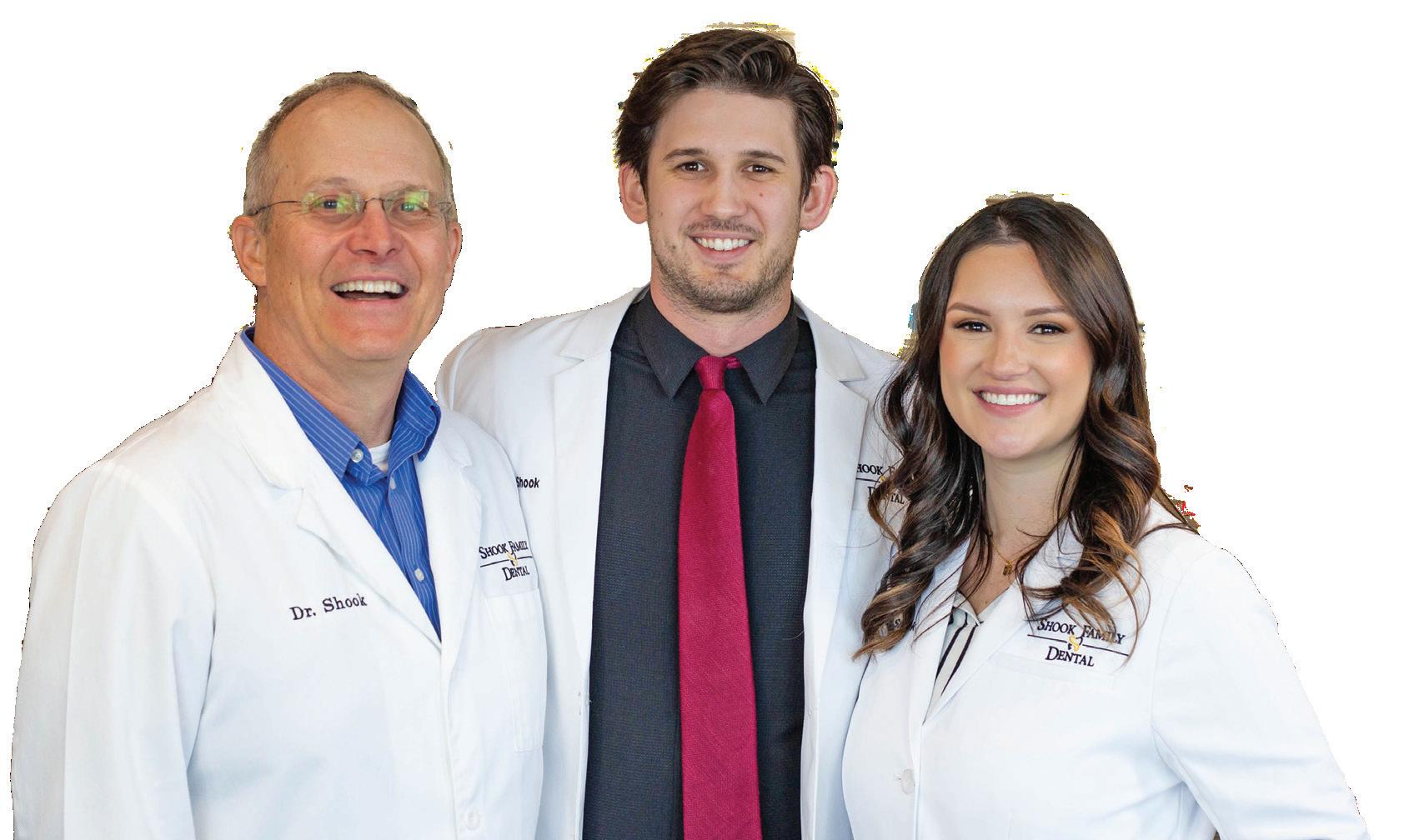
the dentist at a young age can help prevent future dental anxieties. The TVs in the office come in handy for this because, as Dr. John explained, “Lots of kids like watching shows and it’s amazing, they just zone out. It’s better than the nitrous.”
Another huge barrier to the dentist for a lot of people is the cost, especially for those who may not have dental insurance. Shook Family Dental has a membership program for those without insurance to try
Monica say that putting off going to the dentist can actually continue to deepen your fear of going.
“I think it’s even more important to go to the dentist the more anxious you are,” Dr. Monica said. “You’re going to reinforce that dental anxiety the more you put things off until there is a problem because then every experience you have at the dentist will be an intervention or even a painful one.”
“A filling of a smaller cavity is way cheaper and way less traumatic than coming in with a swollen face because that small cavity got huge and now it’s painful,” Dr. John added.
This is crucial for children as well, they said, because rein forcing a positive experience at
and keep the cost down as much as they can so that anyone can get the preventative care that they need.
No matter your fears or situation, the whole Shook Team is committed to making sure your experience is pleasant and calming.
“There’s not a culture of shaming people here for not coming to the dentist,” Dr. John said. “We under stand that no one wants to come to the dentist. I’ve heard from so many people that they avoided the dentist because the last time they went they got lectured. We’re not going to lecture you. You’re here, and that’s the biggest thing you can do for your oral health.”
“WE TRY TO LEARN WHERE THE FEAR STEMS FROM TO HELP ALLEVIATE IT.”